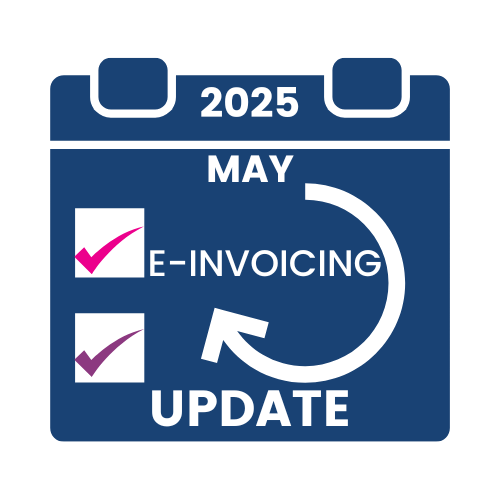
Investing in RPA – Robotic Process Automation
RPA is a developing technology that relies on existing technologies such as artificial intelligence, screen scraping and workflow automation. RPA builds on these technologies, advancing their capabilities in a drastic way.
RPA software allows users to automate and manage workflows using a drag and drop interface. It does this in a visual way that doesn’t require any coding knowledge. This makes robotic process automation accessible to everyone.
Unlike many web scraping tools, RPA software can make use of optical character recognition (OCR) technology to adapt to changing websites, templates and spreadsheets without requiring human intervention or re-coding.
The benefits of automation are now better understood with demonstrable and measurable results. There are a whole host of case studies showing huge savings in costs and efficiencies. These are not simply just replacing humans but augmenting the work they do, making them more productive.
It’s no understatement to say that robotic process automation is changing the face of business as we know it.
So how can RPA investment help your business?
- Reduce costs and save time
- Quick and visible return on investment
- Increased cyber security
- Easy to implement and scale
- Facilitate compliance
- Free up skilled resources for strategic tasks and create new jobs
1. Reduce Costs and Time

Time Savings
A survey of 1,000 workers said they spend a quarter of their working week on repetitive tasks. To put this into perspective that is 10 hours a week or 520 hours a year. All on tasks that can now be automated by robots.
Here is an example of how much time RPA investment can save organisations:
A well established mutual company in Australia called Australian Unity recently implemented RPA. Previously the company (which offers health, wealth and living services to one million Australians) had skilled employees manually reviewing data from government forms. Implementing RPA has eliminated 22,493 hours of manual work and freed employees to work on higher-value tasks. Tasks that provide more value to the organisation.
Money Savings
Humans are not designed to work on repetitive mundane tasks. People are prone to interruption and error. In fact, human error costs the average multinational company an estimated £64 million a year. Fortunately, robots love these kinds of tasks. They will happily plug away, error-free, 24 hours a day, 365 days a year.
Reduced Staff Costs
By using robots to do repetitive mundane tasks, workers can concentrate on more productive work. Unlike their human counterparts, robots don’t take holidays and never go off sick.
Tasks Completed Faster
It has been estimated that robots can work up to 15 times faster than humans. Add to this the fact they also work 24/7 you have a very productive member of the team that will never make a mistake.
2. Return on Investment

Fast Return on Investment
As RPA (robotic process automation) can be implemented quickly, ROI is obtained much faster than traditional workflow process improvements. A typical implementation for RPA is eight to twelve weeks, with most adopters seeing a return on their investment within just six months of deployment.
Revenue Generation Increased
Typically as organisations grow, workloads increase. This would usually mean recruiting more staff, which would also need training. All of which can be very costly to an organisation. However, when using robots there is no recruitment, induction or training. Therefore department costs can be kept low, whilst dealing with increased workloads due to additional robots.
EDF Energy decided to use RPA to increase the efficiency of their Shared Services Centre’s operations. Extending the services they could offer to other business support operations. They implemented robots for finance tasks in a four week period.
Automating just eight processes achieved an estimated six times ROI of time and money. This saved approximately £100,000 in software licensing and development costs as well as 70 hours per month. This all occurred during the initial pilot stage.
3. Cyber Security

Response Time
Another often overlooked benefit of introducing RPA is how it can help with cyber security. RPA helps improve cyber security due to the shortening of response times. Robots can act quickly to help security management minimise exposure time as they can operate quicker than humans can. This helps mitigate any potential damage.
Security Controls
Robots can deploy security controls whenever they detect compliance exceptions. Therefore they can act quickly and alert humans when something is wrong and needs to be dealt with.
As robots can replace the manual component of laborious and repetitive tasks they eliminate the need for validation checks of pre-certification data to be conducted by hand.
Robots can also replace the manual processes of:
- Campaign checks during access certifications and reviews
- Certification configuration management
- Post-certification reconciliation
RPA can also provide automated reporting which diminishes unauthorised access.
Furthermore, robots can be deployed to detect sensitive data. They can then either validate it or remove it if stored in unauthorised locations. Cognitive learning can refine the automated processing by categorising confidential information.
4. Implement and Scale

Fast Implementation
Unlike recruiting more staff RPA processes can be implemented in a few weeks. A typical PoC to pilot takes twelve weeks from start to finish.
RPA is agnostic, meaning it can work alongside and use existing systems. It will work with most applications, replicating logins and processes that humans do.
Once a robot is templated it takes minutes to replicate the process. This is obviously much quicker than training a new member of staff to do the same job.
Minimal IT Resources
Programming robots can be as simple as dragging and dropping, meaning it does not require a high level of IT resources to implement.
Implementing robots is a great way of growing and expanding the size of a business. For instance, the same robot can be used for multiple tasks. They can even run different processes one after another for 24 hours a day.
Here is an example of how RPA was used to increase productivity using minimal IT resources.
The DWP implemented RPA for the process of new pension claims. The process was heavily manual and had led to a backlog of over 30,000 claims.
Shaun Williamson, Senior Product Manager at DWP, estimates that the department would have needed to employ thousands of people and taken several thousand hours to catch up.
Instead, they deployed twelve robots that could handle 2,500 claims per week. This cleared the entire backlog in two weeks. Rather than just proving the technology concept, the pilots became business-critical as soon as they were delivered.
They showed that RPA could move from concept to deployment in weeks compared to the six to nine months that people were used to (even with agile projects).
Speed of deployment is a huge advantage of RPA systems. The department now has 20 automated processes and have deployed 50 Robots. Providing flexibility and efficiency that the DWP could not have delivered before.
The robots were built from easy-to-use customisable templates and the department can now create a new robot in three minutes.
5. Facilitate Compliance

Human Error is the Main Reason for Compliance Breach
Copying and pasting large amounts of data between databases and conforming with GDPR requests is a laborious and error-prone task.
Because it is rule-based and repetitive RPA can be used to update customer information in an error-free and compliant way.
Regulations Around GDPR
The increased regulatory and compliance burden brought about by General Data Protection Regulation (GDPR) has forced companies to re-examine their data management provisions.
RPA solutions help handle data safely and consistently in line with GDPR regulations. This includes handling ‘right to be forgotten’ requests, making changes to personal data and checking data against consent and revocation databases.
‘Know Your Customer’ or KYC for short, is very important for financial services and gambling sectors. It is the process of properly verifying the identity of customers to minimise the risk of fraudulent or illegal trading activities.
Here is an example of how Ladbrokes deployed RPA to verify their customer details to conform to KYC regulations.
Ladbrokes deployed robots that could automate the KYC process to improve efficiency and compliance. The robots they deployed took only 49 seconds to complete the KYC process which was typically taking a member of staff five minutes to complete.
Ladbrokes Coral estimates that this has returned over 5,500 hours each year and saved the company over £25,000 each year.
The robots handled over 7,000 customer verifications in the first four weeks alone. That’s an incredible volume of work in such a short time.
6. Free Up Skilled Resources

Strategic Development
Employers who utilise RPA to deal with repetitive mundane tasks find their employees have more time to work on strategic elements of their jobs. This could be data analytics or deep digging into results with the view of fine-tuning processes. Employees can then identify bottlenecks both inside and outside the organisation. With this new information, employees can redesign the workflow to improve results.
Employee Engagement
Removing boring, repetitive aspects of jobs will usually improve job satisfaction. This in turn will make employees more engaged with their organisation and jobs.
This results in lower employee turnover, fewer sick days and a healthier happier team!
New Jobs
Automation changes the briefs of many traditional roles meaning employees will need to up-skill and re-skill. Learning new skills and developing within the role is a key part of working in today’s progressive organisations.
A global insurance provider selected a task that required employees to locate customer data in a legacy mainframe, extract it, and enter this information in a number of highly complicated, macro-enabled spreadsheets.
The process was extremely time-consuming, error-prone, and repetitive. In fact, a closer look revealed that these steps had to be performed hundreds of times per week. In short, this workflow was the ideal candidate for RPA.
Bolstered by the initial success of its POC, this insurance company rolled out its first official robot. Today, this robot has been able to automate this important task and deliver impressive time savings. Employees used to take approximately four minutes to read the correspondence and match it to the right claims file.
Now, the robot can do it in less than 42 seconds. The solutions architect is quoted as saying:
“Everyone loves these robots and are pleased that their hard work is freeing employees to tackle more interesting analytical work. These robots have been warmly received by their colleagues, and we are already looking at new tasks that they might be able to take on.”





